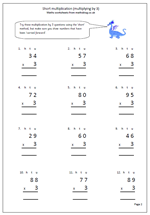 Here we have another page which looks at the written method of subtracting decimals. The key here is to lay the question out in the traditional method, with the smaller number below the larger number and with the decimal points in line.
Here we have another page which looks at the written method of subtracting decimals. The key here is to lay the question out in the traditional method, with the smaller number below the larger number and with the decimal points in line.
Sometimes these can be quite tricky; for example with a subtraction such as 8.5 – 6.26 it is important to write down a zero making the 8.5 into 8.50.
Also watch out for children who subtract the top number from the bottom number in an attempt to avoid the ‘decomposition’ process.








